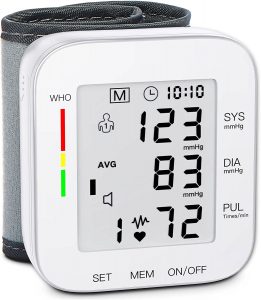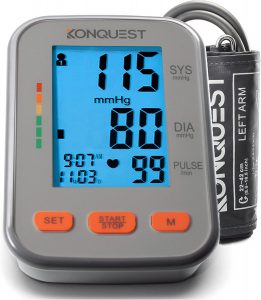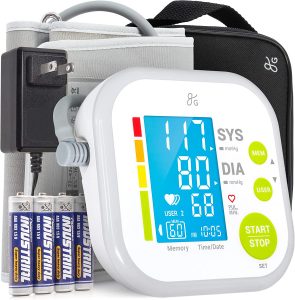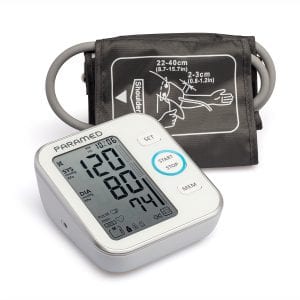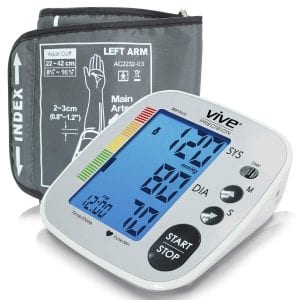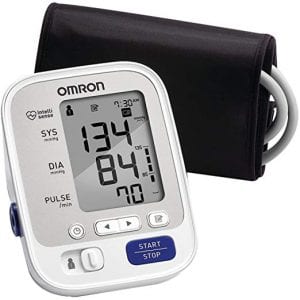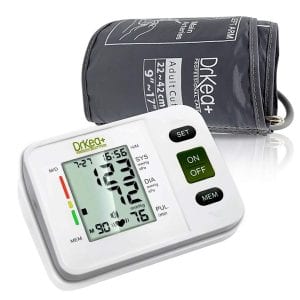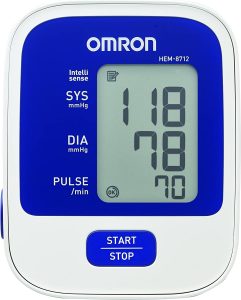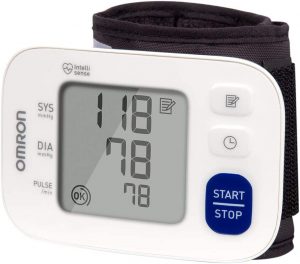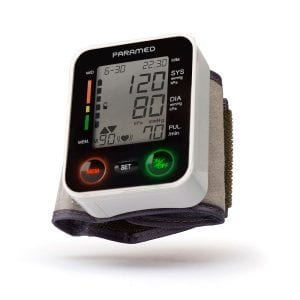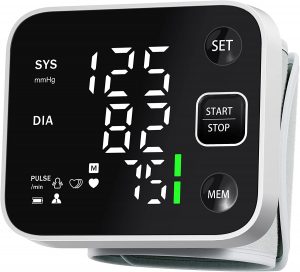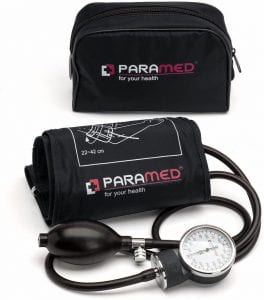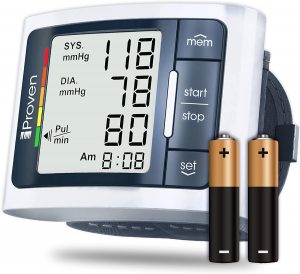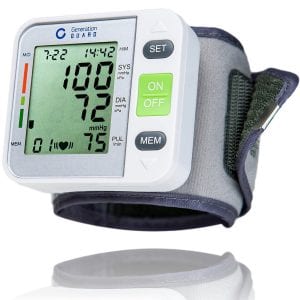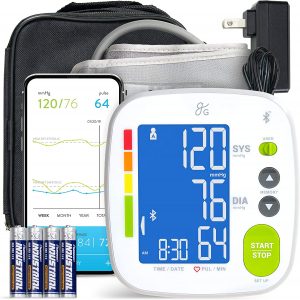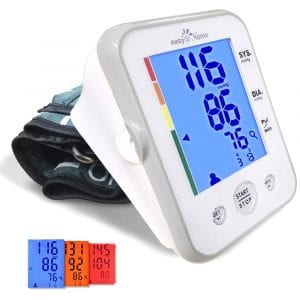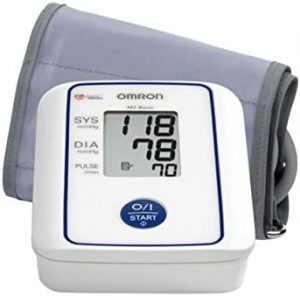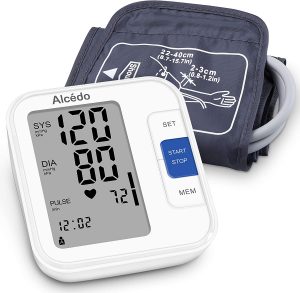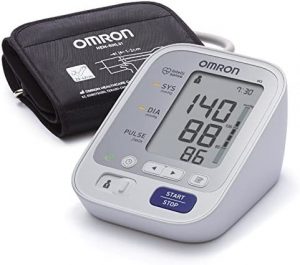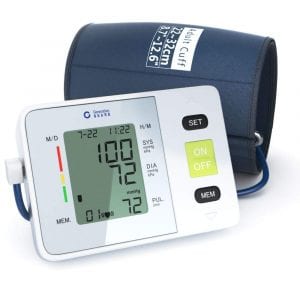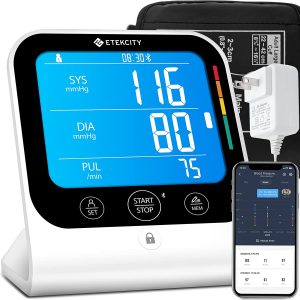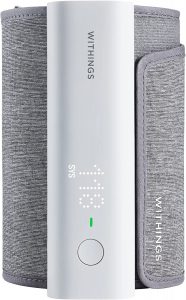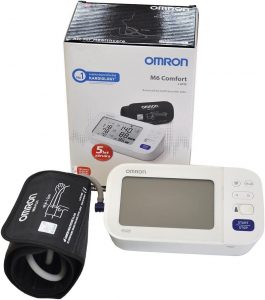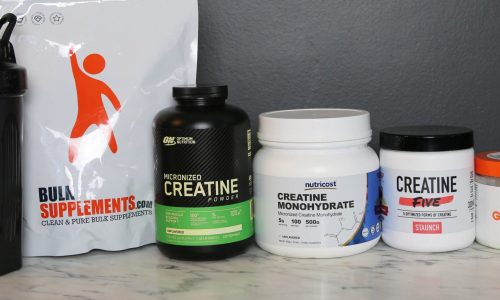The Best Blood Pressure Monitors
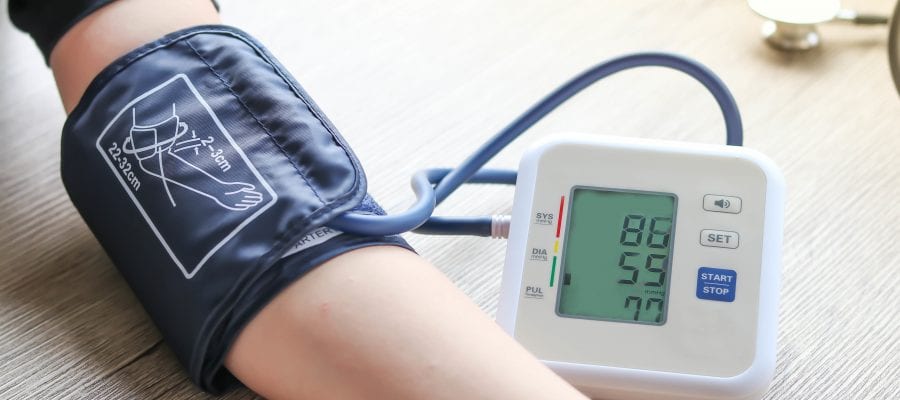
Our Review Process
Don't Waste Your Money is focused on helping you make the best purchasing decision. Our team of experts spends hundreds of hours analyzing, testing, and researching products so you don't have to. Learn more.
Our Picks For The Top Blood Pressure Monitors
- 1. MMIZOO Voice Broadcast Multifunctional Blood Pressure Monitor
- 2. Konquest User Friendly Arm Blood Pressure Monitor
- 3. Greater Goods Irregular Heartbeat Detector Blood Pressure Monitor
- 4. Paramed Automatic Upper Arm USB Blood Pressure Monitor
- 5. Vive Precision Automatic Blood Pressure Cuff
- 6. Omron 5 Series Contoured Cuff Blood Pressure Monitor
- 7. DrKea Fully Automatic Blood Pressure Machine Kit
- 8. Omron 8712 Manual Inflation Blood Pressure Monitor
- 9. Omron 3 Series Irregular Heartbeat Detection Blood Pressure Monitor
- 10. Paramed Automatic Wrist Blood Pressure Monitor
- 11. FENGHOU All-In-One Accurate Wrist Blood Pressure Monitor
- 12. Paramed Aneroid Sphygmomanometer & Durable Carrying Case Blood Pressure Monitor
- 13. iProven Clinically Accurate & Fast Reading Wrist Blood Pressure Monitor
- 14. Generation Guard Clinical Automatic Blood Pressure Monitor
- 15. Greater Goods Whole Body LED Blood Pressure Monitor
- 16. Easy@Home Digital Upper Arm Blood Pressure Monitor
- 17. Omron M2 Easy Read Clinical Blood Pressure Monitor
- 18. Alcedo 2-User Mode One-Push Blood Pressure Monitor
- 19. Omron M3 Upper Arm Automatic Blood Pressure Monitor
- 20. Generation Guard Clinical Automatic Upper Arm Blood Pressure Monitor
- 21. Etekcity Battery Powered Smart Blood Pressure Monitor
- 22. Withings Automatic Sync Rechargeable Blood Pressure Monitor
- 23. Omron HEM-7322-ME M6 LED Morning Hypertension Tracking Blood Pressure Monitor
If you're looking to keep track of your health over a period of time, this blood pressure monitor is an essential tool. It supports up to two users and can hold 99 previous readings for each user. The device is also easy to use as it is designed to be worn on the wrist.
One Key OperationThis blood pressure monitor is able to deliver accurate results in as little as 45 seconds.
The large backlit display on this blood pressure monitor makes it easy to read. The device also includes a color guide, so you can quickly identify whether your blood pressure is normal or high. Irregular heartbeats can also be detected with this model, making it a solid choice.
Economical PickThis high-quality blood pressure monitor won't break the bank.
You won't have any trouble reading your results with this blood pressure monitor, as it comes with a large display screen. The unit can be powered via an electrical outlet or by a set of batteries, which is handy during power outages. Included with your purchase is a handy carrying case.
Easy to ReadIf you like to travel, you'll love that this blood pressure monitor comes with a convenient carrying case.
Not only will this blood pressure monitor let you know if the cuff isn't positioned correctly, but it also offers a choice between silent and voice mode. The LCD screen uses large numbers for easy reading and the device is capable of recording up to 120 readings for two people. There's even a handy carrying case in the event that you need to travel...
Voice Broadcast SettingIn addition to silent mode, this blood pressure monitor has a voice broadcast setting.
Buying Guide
High blood pressure affects one in three Americans, yet many don’t even realize they have it. Known as the silent killer, it can cause a sudden heart attack or stroke without any symptoms at all beforehand. If you have regular medical checkups, you’ll likely be tested before every visit. But for some people, at-home checks are critical to keeping it under control.
For that reason, home blood pressure monitors have become increasingly popular in recent years. As technology evolves, these monitors have grown far more sophisticated, interacting with smartphones and even allowing multiple people in the same household to store their own information.
“BP monitors at home are to help give you feedback on your blood pressure and response to starting hypertension medications. However, the more important role is for you to keep a log of your pressures so that your doctor can get a sense of your BP control over several days,” says Dr. Niket Sonpal, a gastroenterologist based in New York City.
There are more than bells and whistles to a blood pressure monitor. Accuracy is a top priority, but it can get confusing since many devices promise accurate results. One method some devices use is averaging, which takes multiple readings and gives you the average of all. Some monitors also use AM/PM averaging to help you keep an eye on your overall daily blood pressure readings. Dr. Sonpal also recommends getting it calibrated for accuracy at your doctor’s office.
MORE: The Best Healthy Snacks
Ease of use is another factor when you’re choosing a blood pressure monitor. You’ll need to consider how easy it is to slip the blood pressure cuff on and off your arm, as well as the screen that comes with the device. Some monitors have large, easily readable digital screens that clearly reveal your reading to take away the guesswork.
Once you’ve seen the reading, though, you’ll probably also want to save it. Some blood pressure monitors store your readings to let you check back later. This makes it easy to compare from one day to the next. Newer blood pressure monitors also connect to apps that will break down the information for you in a more useful manner than a couple of numbers on a screen.
MORE: The Best Stress Ball
If there’s more than one person in your household, you also may want to consider blood pressure monitors that store multiple readings. Instead of buying separate devices for everyone in your home who has high blood pressure, you’ll be able to consolidate everything in one place. Some monitors handle this more easily than others, though. So you may want to watch for one that makes it easy to capture multiple readings without having to always make sure you’re under the right username.
Although many blood pressure monitors are automatic, you’ll find some that require you to press on a bulb repeatedly to manually inflate the cuff. You can save money by opting for one of these models, and you’ll likely also find they’re more durable than their mechanically inclined counterparts. They also tend to be less expensive, although blood pressure monitors are fairly inexpensive to begin with, so you might find it’s worth it to pay a little more for an automatic device.
When shopping for a blood pressure monitor, It’s also important to remember that not all arms are the same size. Use a tape measure to check the size of your bicep, and then look for the size listing on any monitor you’re considering. Although there is some wiggle room in cuff sizes, making sure it handles your arm size can boost the monitor’s accuracy, as well as your comfort level.
Our Expert Consultant

Gastroenterologist and adjunct assistant professor at Touro College of Osteopathic Medicine
Dr. Niket Sonpal is an adjunct assistant professor at Touro College of Osteopathic Medicine and clinical instructor at Kingsbrook Jewish Medical Center, Brooklyn, who specializes in gastroenterology.
He is a graduate of the Medical University of Silesia-Hope Medical Institute in Poland. After completing his residency in internal medicine at Lenox Hill Hospital, he was selected to be the 2013‐2014 Chief Resident at Lenox Hill Hospital–Northshore LIJ Health System. Dr. Sonpal completed his fellowship in gastroenterology and hepatology at Lenox Hill Hospital and continues his work in the field of medical-student and resident-test preparation. He now serves as the associate program director for the Internal Medicine Residency Program at Brookdale University medical center.
He is also the co‐author of several medical test prep books and serves as the chief operating officer for Medquest Test Prep and director of medical education for Picmonic Test Prep.
What to Look For
- A blood pressure monitor will be of no use if its readings are inaccurate. A monitor with dual sensors can improve accuracy. Three readings are taken, then averaged to ensure the information you’re getting is accurate. Built-in accuracy programs or special designs can also improve results.
- The arm cuff plays an important role in accuracy. Look for easy-wrap cuffs with a snug fit. This keeps the cuff firmly positioned in place, further ensuring the accuracy of results.
- If you choose a monitor with manual inflation, you’ll have to squeeze the bulb repeatedly, similarly to the way you’ve seen medical professionals do it. Other home blood pressure monitors do this work for you.
- No two arms are the same size, so it’s important to determine the size of your bicep with a tape measure before buying. Blood pressure cuffs are adjustable within a certain range, so it likely won’t have to be correct down to the centimeter. Most cuffs are measured in inches.
- Blood pressure monitors are fairly inexpensive, but you’ll save even more if you go with a manual-pump monitor.
- If getting a quick reading so you can go on with your day is important, consider a quick-reading monitor.
- Although you may know your desired numbers, having a little help can come in handy. Models with multicolored lights can show how your reading compares to normal results.
- For a more complete view of your heart health, go with a monitor that shows your pulse along with your blood pressure.
- How the results are displayed matters. Simple white digits on a black background make it easy to see your numbers. Black digits on a gray background might be a little tougher.
- See if you can take multiple readers on the same unit. If someone living with you also needs to conduct regular blood pressure checks, the unit can switch back and forth, even storing the information. This can get confusing, though, since you’ll have to make sure the unit is on your file each time you use it.
- Some monitors link up to smartphone apps that store your information. Unfortunately, this means you have to sync your data every time if you want to maintain an up-to-date history of each of your readings.
- If connectivity is important to you, set your sights on a monitor with Bluetooth connections and smart home compatibility.
- Durability is worth considering if you want to get the most bang for your buck. Devices with simple builds can be better for long-lasting reliability.
- Another benefit to self-pump devices is that you can calibrate them yourself. This can provide an assurance of accuracy that you won’t get with an auto-inflate monitor.
- If you plan to take your device on the go with you, consider a compact and wireless monitor. This makes it easy to tuck into your bag and use anywhere.
- Check and see what kind of batteries your monitor might need and stock up on them before you spend your money.
More to Explore
If it’s been a while since you’ve gone for a checkup, you may want to schedule one. In 2017, the American College of Cardiology and American Heart Association adjusted the blood pressure guidelines, dramatically increasing the number of Americans whose blood pressure is not within a safe range. For normal blood pressure, your systolic pressure, which is the top number, should be below 120. The bottom number, which is your diastolic pressure, should be less than 80. If your systolic is between 120 and 129, your blood pressure is elevated, and high blood pressure falls between 130 and 139 over 80 to 89.

